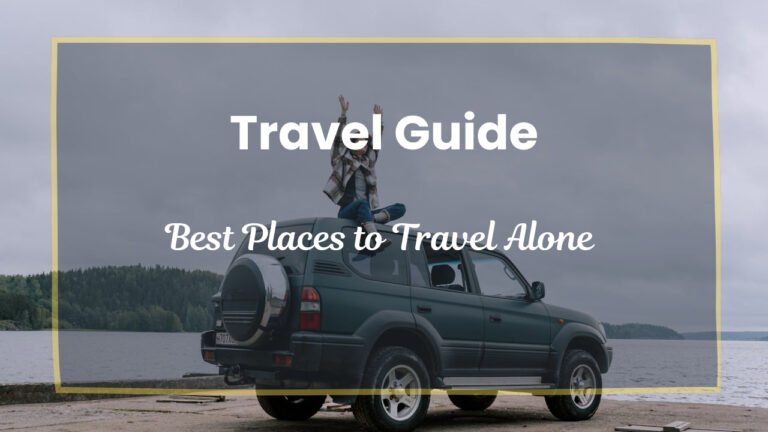Travel Photography Tips for Stunning Moments
 Travel photography tips will elevate your memories to masterpieces. Learn how to light and frame a scene, whether using a DSLR or mirrorless camera. This will improve your photos, as well as your travel experience.
Travel photography tips will elevate your memories to masterpieces. Learn how to light and frame a scene, whether using a DSLR or mirrorless camera. This will improve your photos, as well as your travel experience.
This guide will help you capture amazing photos no matter where you are. It includes gear recommendations, expert advice and ethical considerations.
Why Travel Photography Matters
Travel photography is much more than a simple visual journal. It captures light, culture, emotion, and history. Great travel photos can:
- Encourage others to explore the globe
- Save moments that no words can describe.
- Reflect on the places that have changed you.
- Add us to your portfolio of professional or creative work.
Travel photography is a powerful tool that has crossed borders, just like you.
Essential Travel Photography Tips

1. Master Your Camera Before You Go
Before your trip, you should learn how to use a camera.
- Shooting in manual mode will allow you to better control your exposure.
- Understanding the exposure triangle: ISO, aperture, and shutter speed.
- Practice focus settings, including single-shot (AF-S) vs. continuous (AF-C).
Expert Tip: If your camera supports it, create custom user profiles to access portrait, landscape, and low-light settings quickly.
2. Shoot During the Golden and Blue Hours
A photo can be made or broken by the lighting.
- Golden Hour: The hour between sunrise and sunset. Golden Hour: An hour after sunrise and before sunset.
- Blue Hour: Before sunrise and just after sunset. Cooler tones with a moody feel.
Use these times to plan your shots for dramatic, natural light. Track light conditions using apps such as PhotoPills and The Photographer’s Ephemeris.
3. Use the Rule of Thirds—Then Break It
The rule of thirds can help you balance your composition. Imagine your frame split into a 3×3 grid:
- Place your subject in the intersection.
- Keep the horizons at either the top or bottom line.
- Align vertically your buildings or trees.
Don’t be afraid of breaking this rule, especially when capturing minimalist scenes or dramatic leading lines.
4. Tell a Story Through Your Lens
Good travel photography evokes emotion. Include:
- Context shots are wide images that show the location or landscape.
- Detail shots: Close-ups of textures, foods, signs, hands, etc.
- People: candid moments of locals and fellow travelers.
Pro Tip: Create a visual story. Consider your pictures a short movie rather than individual shots.
5. Use Natural Framing and Leading Lines
Use the environment to frame your subject to add depth and visual interest.
Examples:
- Arches or doorways
- Overhanging trees
- Railings, pathways, or roads leading to the subject
It will draw the viewer’s attention and give your photo a more immersive feeling.
Travel Photography Gear Essentials

It’s not necessary to have a studio set up in order to take high-quality photos of your travels. Packing light and smart is the key to being ready to shoot anytime.
Camera Options:
- Mirrorless cameras (e.g., Sony a7 Series, Canon EOS R) are compact, lightweight, and powerful, ideal for professionals and enthusiasts.
- DSLRs (e.g., Nikon D750 or Canon 90D) are heavier but offer excellent image quality and controls.
- High-end smartphones (e.g., iPhone Pro, Google Pixel, or Samsung Galaxy Ultra) are perfect for spontaneous or casual shots.
Lenses to Bring:
- Wide-Angle (16-35mm lens): This lens is ideal for wide-ranging landscapes, cityscapes, and interior shots within tight spaces.
- Prime Lenses (35mm and 50mm) are sharp, lightweight, and perfect for street photography, portraits and food. Because of their wide apertures, they also work well in low-light conditions.
- Zoom Lens (24 to 70mm): This versatile lens allows you to capture different scenes without having to switch lenses.
Tripod:
Travel-friendly tripods, such as the Manfrotto BeFree Travel Tripod or Peak Design Travel Tripod, are great for low-light shots, long exposures of night skies, waterfalls and other subjects, and self-portraits.
Accessories:
- Batteries (cold climates will drain them quicker)
- Additional memory cards are essential for backup.
- ND Filters (for blurred water or smooth water in bright conditions).
- Lens cloth with blower (to remove dust and smudges while on the move)
- A comfortable camera strap or harness can ease the strain on your body during long shooting days.
Pack tip: Only bring what you will actually use. The lighter your gear, the more creative and nimble you will feel.
Ethical and Cultural Considerations in Travel Photography

Photographers are not only capturing images, but also stepping into the lives of people and their environments. This comes with responsibility.
- When photographing children or individuals in places of worship, it is important to ask for permission. Respectful interactions can result in better portraits.
- Avoid using private moments or poverty as a photo opportunity. When you use someone else’s image to tell their story, do so with dignity.
- Respect local customs. Know what is sacred or forbidden. In some cultures, even pointing a digital camera at someone may be offensive.
- Protect the Environment. To get a perfect shot, do not disturb wildlife or damage natural areas. Stick to marked trails and do not damage any natural areas.
Respect can build trust and open the door to stories you would otherwise miss.
Post-Processing Tips to Polish Your Travel Shots
Editing is the final step of your creative process. It brings your vision to reality and fixes minor imperfections.
- Shoot in RAW: This gives you full control in post-processing—you can recover blown highlights, adjust shadows, and fine-tune colors.
- Use Lightroom or Capture One: Presets can speed up editing and maintain a consistent look across your photos.
- Don’t lie, enhance. Over-editing can cause images to look outdated or unnatural.
- Resize and Compress for the Web: Use tools such as TinyPNG or ImageOptim to reduce loading times without sacrificing sharpness, which is important for SEO and social media sharing.
Travel Photography Tips for Social Media

Social media is the new gallery to showcase your best travel photos.
- Shoot vertically (4:5 ratio): This is optimized for Instagram’s feed and improves engagement.
- Write captions that tell a story: Share more than “sunset on Bali”. Share a memory, insight, or moment from the scene.
- Use smart hashtags: Combine popular tags (#travelphotography and #exploremore) with location-specific or niche tags (#hiddenparis and #tuscanyviews).
- Be social on Social media: Respond to comments, join groups for travel photography, and follow the creators who inspire you.
Visual storytelling can be more powerful when combined with your voice and point of view.
Bonus: Travel Photography Challenges to Try

Self-imposed creative photo missions will help you improve your photography skills.
- Color Challenge: Choose one color, and only shoot subjects that feature it. Great for developing an eye for detail.
- Minimalist mode: Use only one lens, such as a prime 35mm lens, and see how you can creatively frame different scenes.
- Asking strangers to pose for portraits (with their permission) is a great way to learn about people. This improves your storytelling and confidence.
- Night Shoots: Capture life after dark—markets, neon signs, candlelit dinners. Low-light photography is a challenge.
These mini-assignments will sharpen your photography skills and make it more enjoyable.
Final Thoughts
Travel photography tips will not make you an expert overnight, but they can give you the foundation you need. Real growth occurs when you make mistakes, use imperfect lighting, and discover magic in unexpected moments.
Each click of the shutter will bring you closer to mastering visual storytelling, whether you are exploring the big five in Kenya, trekking in the Himalayas, or exploring the medinas of Morocco.
FAQs
Do I need an expensive camera to get good travel photos?
No. Good lighting, composition and timing are the keys to great photos. Smartphones can produce high-quality photos.
How do I stay safe when photographing in unfamiliar places?
Avoid shooting at night alone, be discreet, learn local customs, and don’t show off expensive equipment.
Should I edit my travel photos
Yes. But try to improve and not misrepresent. Simple edits to contrast, clarity and cropping can make a big difference.
How do I improve my travel portraits of people?
Establish rapport before requesting a picture. Learn to use natural light when shooting and how to frame your subject.







